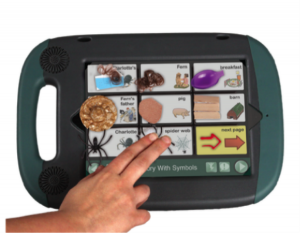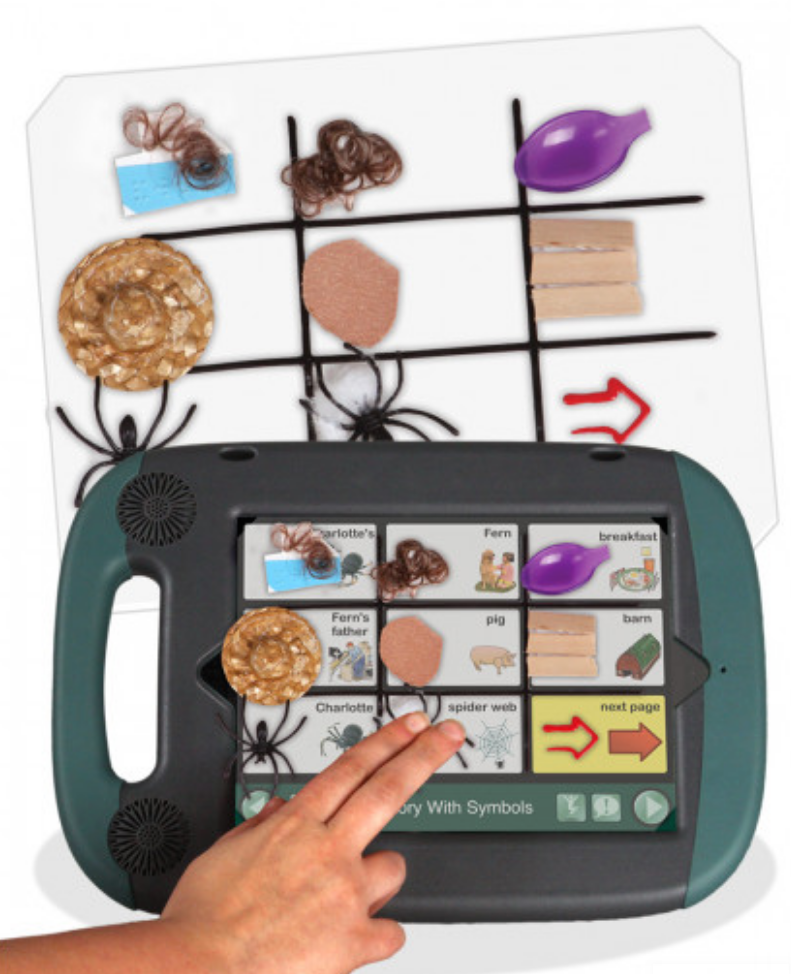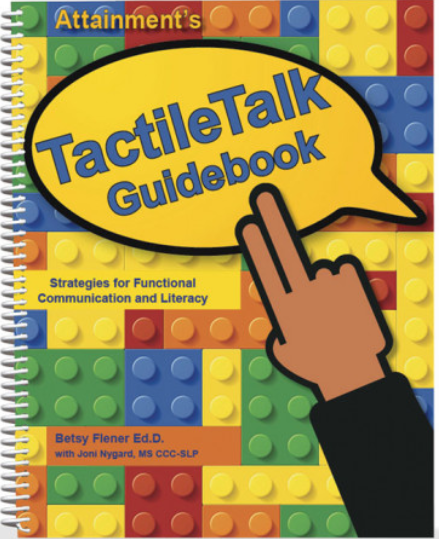TactileTalk Toolkit and Guidebook for iPad

The use of tactile or tangible symbols is one of the many ways that students with significant visual and multiple impairments can communicate. These students often begin using objects and then progress to tangible symbols. These symbols typically consist of pieces or textures of objects that are associated to a referent. Tactile/tangible symbols can represent people, objects, places, activities, or concepts (Rowland & Schweigert, 2000).
Tactile / Tangible Symbols with Voice Output
For this population, one of the disadvantages of using a tactile/tangible symbols system has been the lack of voice output. The advantages of using Voice Output Communication Aids (VOCAs) is well documented in the literature. They include:
- The ability of the communication partner to know exactly what is expressed
- With a spoken response, the child begins to establish the meaning of spoken words and may increase verbal speech
- A consistent auditory output matched with a consistent motor plan allows the child to complete the motor learning process
- Language foundations are enhanced
In response to the need for tactile/tangible symbols with voice output, Joni Nygard, a specialist in augmentative alternative communication (AAC), and Dr. Betsy Flener, a specialist in working with students who have visual impairments and multiple disabilities, created the TactileTalk Toolkit and Guidebook: Strategies for Functional Communication and Literacy. This creation was the result of a 2 ½ year collaboration and is the winner of the 2015 National Braille Press Louis Braille Touch of Genius Competition for Innovation.
Using the iPad as a Communication and Literacy Tool
In recent years, the iPad has become widely accepted as a tool for voice output communication. Its special features including portability, touch screen flexibility, and social acceptance make it highly motivating and accessible. Other advantages include its low cost, long battery life, accessories, and the ability to customize various applications. Hence, the TactileTalk Toolkit was developed and launched for this population of individuals who’d benefit from the voice output of the iPad for communication and literacy purposes when paired with appropriate tactile symbols.
Contents of TactileTalk Toolkit
The TactileTalk Toolkit contains: GoTalk NOW app, an in-app communication book with concept and literacy components pre-programmed entitled TactileTalk, 25 pre-made tactile/tangible overlays, 5 blank customizable overlays, along with a 124-page Guidebook and a storage case for the objects. The pre-made overlays contain textures, pieces of objects, and embossed objects.
The TactileTalk communication book (in-app) works within the GoTalk NOW app. All pages are linked together, and the first six overlays comprise the primary communication pages of the book. Other pages assist in teaching and reinforcing concepts such as positions, shapes, textures, sizes. A grooming routine with tactile symbols is also included along with a narrated and adapted version of the book Charlotte’s Web, to further incorporate a strong literacy component. In creating the system, Flener and Nygard carefully planned out the navigation within the system for easy access to communication expressions and concepts. Their research included work regarding the conductivity of various materials on an iPad with an eventual strategy for the student with visual impairments to touch objects on the left of a key and tap to the right of the key to activate auditory cues and messages efficiently. This toolkit has been well-received in the field and is beginning to open-doors for students with complex issues to learn concepts and communicate their basic needs and wants using a consistent approach.
References
Rowland, C. & Schweigert, P. (2000). Tangible Symbol Systems: Making the Right to Communicate a Reality for Individuals with Severe Disabilities.
For More Information


